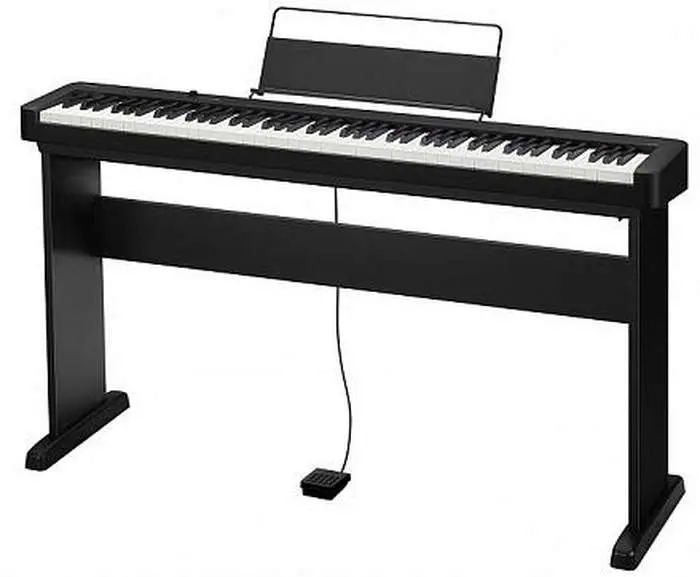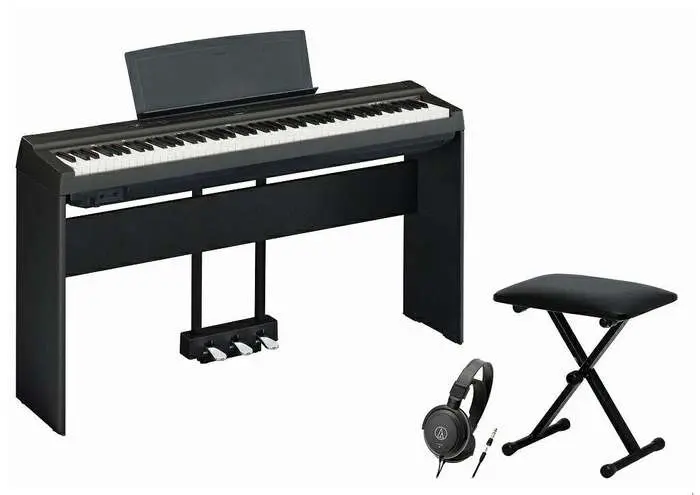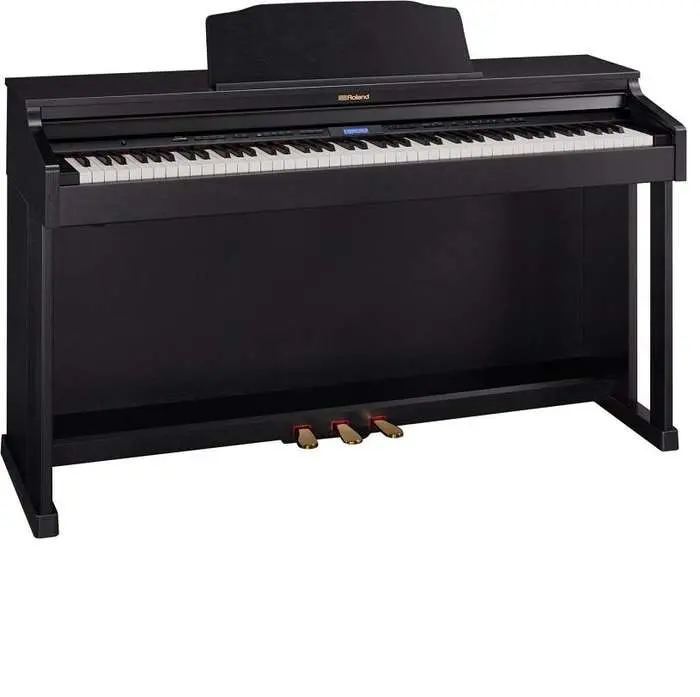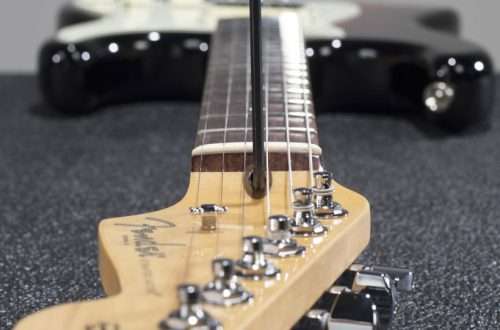
Advantages and Disadvantages of Digital Pianos
Contents
Modern electronic musical instruments are real masterpieces, synthesizing the sound of a classical piano with digital technology, compactness and great design.
The stereotype that such a piano is not like acoustics is becoming a thing of the past, because an electronic piano is far from being a simple synthesizer , but a full-fledged complex system that combines mechanics and advanced technical thought.
Benefits of Digital Pianos
The advantages of electronic pianos are numerous:
- Compactness , small size and lightness in contrast to the bulky classical instrument;
- No need for constant tuning, which means saving money, effort to find a competent specialist, the ability to safely move the piano;
- Adjusting the volume level and the option to connect headphones will significantly smooth out conflicts with households and neighbors on the basis of playing music by a child or other family member, as well as a professional at home;
- The sampling , mixing, MIDI keyboard and PC sync functions are indispensable for people who take music and sound seriously, especially at the high level that today’s market offers;
- Recorder , which allows you to record your performance, hone your technique without using a phone, voice recorder or any other devices;
- The presence of a built-in metronome eliminates the need to look for and purchase a separate device, it is digitally accurate and helps to develop a sense of musical rhythm when playing;
- An electronic instrument has the option of connecting to external amplifiers , an acoustic system, which gives the effect of a concert sound;
- The presence of touch-type digital mechanics , which brings the tactile sensation of the keys of an acoustic piano as close as possible and conveys its sound with the smallest touches and nuances;
- A rich selection of designs , colors, styles and sizes of tools for any request.
What are the disadvantages of digital pianos
The disadvantages of the electronic piano are quantitatively inferior to its advantages. Basically, the myths about the discrepancy between the “numbers” and the level of acoustics come from teachers of the old school. There is an opinion that a modern instrument smooths out flaws and does not convey all the overtones, but this is more likely due to low-quality cheap models from little-known manufacturers. Nevertheless, the digital piano was invented with the goal of being as close to the classical sound as possible and even more.
Among the objective shortcomings of electronic pianos, in fact, only two points can be named. Occasionally, in the case of string tension, such an instrument may need to be tuned, just like a regular one. In addition, a digital device, especially a good and functional one, will have a corresponding cost.
However, the market for musical devices has the widest range and you can always come to a balance of price and quality.
Digital Piano Differences
Electronic pianos differ from each other in such parameters as:
- characteristics of the keyboard and mechanics ;
- external visual;
- richness of polyphony;
- digital opportunities;
- nuances pedal – panels;
- orientation to concert or chamber performance;
- manufacturer and price category.
It is better to take an instrument with a fully weighted 88-key graduated type keyboard and 2-3-touch action . It is also worth giving preference to a piano with full three pedals and a polyphony of at least 64 – 92, and preferably 128 voices. These moments are considered key in terms of beauty and sound quality and proximity to acoustics. The remaining parameters – digital options, design, dimensions, colors are secondary characteristics when buying.
Review of the best digital pianos
Casio CDP-S100
Weighing only 10.5 kg, this compact instrument features an 88-key Scaled Hammer Action Keyboard ll grand piano style. Polyphony in 64 voices, sustain pedal, three degrees of sensitivity to touch.

Yamaha P-125B Digital Piano
A compact digital piano that combines the realistic sound of an acoustic piano with a minimalistic design and portability (weighing 11.8 kg). Polyphony 192 voices, 88 keys and Hard/medium/soft/fixed touch system.

Roland HP601-CB Digital Piano
Endowed with a speaker system, sequencer and graphic display. USB and bluetooth options. It has two headphone jacks. Available in black, white and rosewood.

Digital piano Becker BDP-82W
A fine instrument of massive format, maximally imitating the classical style (50.5 kg), 88-key graduated full-weighted keyboard, wedge and ivory color.
Answers on questions
Are there digital pianos that are as similar to a classical instrument as possible in appearance?
Yes, definitely. There are a lot of such models. The same Becker BDP-82W.
What brand of instrument is best for a child to learn to play?
You should focus on proven brands – Yamaha, Casio, Becker, KAWAI, Roland.
Summing up
The advantages and disadvantages of digital pianos listed above speak only in favor of acquiring such an instrument. A product of technical thought and computer progress, combining the best options of a synthesizer and a piano, and as close as possible in all features to a classical piano, will be a profitable and promising investment for both a student and a professional pianist.





